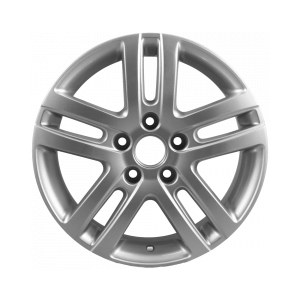Understanding the Importance of Gearbox Drive Shaft Oil Seal for Optimal Vehicle Performance
Understanding Gearbox Drive Shaft Oil Seals
The gearbox drive shaft oil seal plays a crucial role in the overall functionality and longevity of a vehicle's transmission system. This small but essential component prevents the leak of lubricant from the gearbox while also keeping unwanted contaminants at bay. Understanding its structure, function, and maintenance is key for ensuring optimal performance in any vehicle.
What is a Gearbox Drive Shaft Oil Seal?
A gearbox drive shaft oil seal, often simply referred to as an oil seal, is a rubber or synthetic elastomer component that fits snugly around the drive shaft, which connects the gearbox to the wheels. Its primary purpose is to prevent oil and lubricant from leaking out of the gearbox housing while also blocking dirt, dust, and other impurities from entering.
Typically, oil seals are designed with a lip that creates a tight fit against the shaft. This lip is sometimes spring-loaded to ensure a more effective seal even during the dynamic movements of the drive shaft. The seal material is specially engineered to resist high temperatures and pressures, making it suitable for the demands of a vehicle's powertrain.
Importance of Oil Seals in Gearboxes
The gearbox is one of the most critical components of a vehicle, transferring power from the engine to the wheels. It contains a significant amount of lubricant, which helps to reduce friction between moving parts, ensuring smooth operation. An efficient lubrication system relies heavily on effective sealing, as any leak can lead to insufficient lubrication, overheating, and ultimately, catastrophic failure of the gearbox.
A functioning oil seal not only retains the lubricant but also maintains the internal pressure necessary for optimal gearbox performance. If a seal fails, it can result in oil loss, leading to increased wear on gears, bearings, and other components, significantly shortening the gearbox's lifespan.
Signs of Oil Seal Failure
gearbox drive shaft oil seal

Identifying oil seal failure early can save vehicle owners from costly repairs
. Some common signs of a failing gearbox drive shaft oil seal include1. Oil Leaks Visible oil spots underneath the vehicle or wet areas around the gearbox indicate a potential problem. 2. Unusual Noises Hearing grinding or whining noises from the gearbox can signal insufficient lubrication due to a leak.
3. Increased Fluid Levels If the gearbox fluid reservoir is overfilled, it may indicate that dirt or water is mixing with the gearbox oil due to a failed seal.
4. Vibration Excessive vibration during operation may be caused by imbalanced components as a result of insufficient lubrication.
Maintenance and Replacement
Regular maintenance checks of the gearbox and its components, including the oil seals, can extend the lifespan of the transmission system. It is advisable to inspect seals during routine servicing to catch any signs of wear and tear early. If an oil seal is found leaking or damaged, it should be replaced promptly to avoid further damage.
Replacement of the oil seal typically involves disassembling parts of the drive shaft, which can be complex and may require special tools. Therefore, it is often best left to professional mechanics.
Conclusion
In summary, the gearbox drive shaft oil seal, although small, serves a vital function in safeguarding the integrity of the gearbox and ensuring the vehicle operates smoothly. Regular inspections and timely replacement of worn seals play an essential role in vehicle maintenance, ensuring longevity and reliable performance of the transmission system. Understanding the importance of these seals helps vehicle owners appreciate the complexities of automotive engineering and the significance of basic maintenance practices.
-
Understanding the Importance of Oil Seals in Automotive and Industrial Applications
News Jul.04,2025
-
Understanding Oil Seals by Dimension: Types, Standards, and Selection Guide
News Jul.04,2025
-
The Versatility and Innovation Behind Modern Oil Seals
News Jul.04,2025
-
Key Components of Oil Sealing Systems in Automotive and Industrial Applications
News Jul.04,2025
-
Exploring Advanced Oil Sealing Solutions for Modern Machinery
News Jul.04,2025
-
Essential Sealing Components for Oil Systems: From Stem to Tank
News Jul.04,2025
-
Understanding Oil Plug Washers: A Must-Have for Polaris and Other Engines
News Jul.03,2025
Products categories















